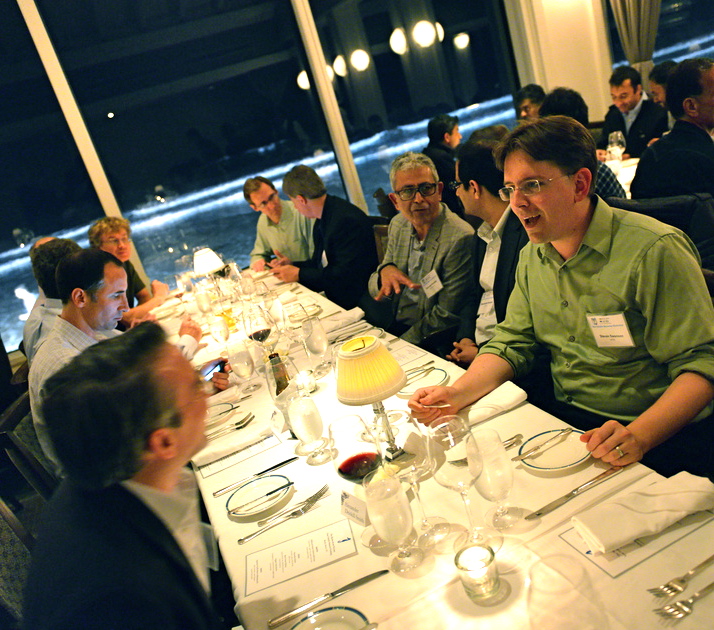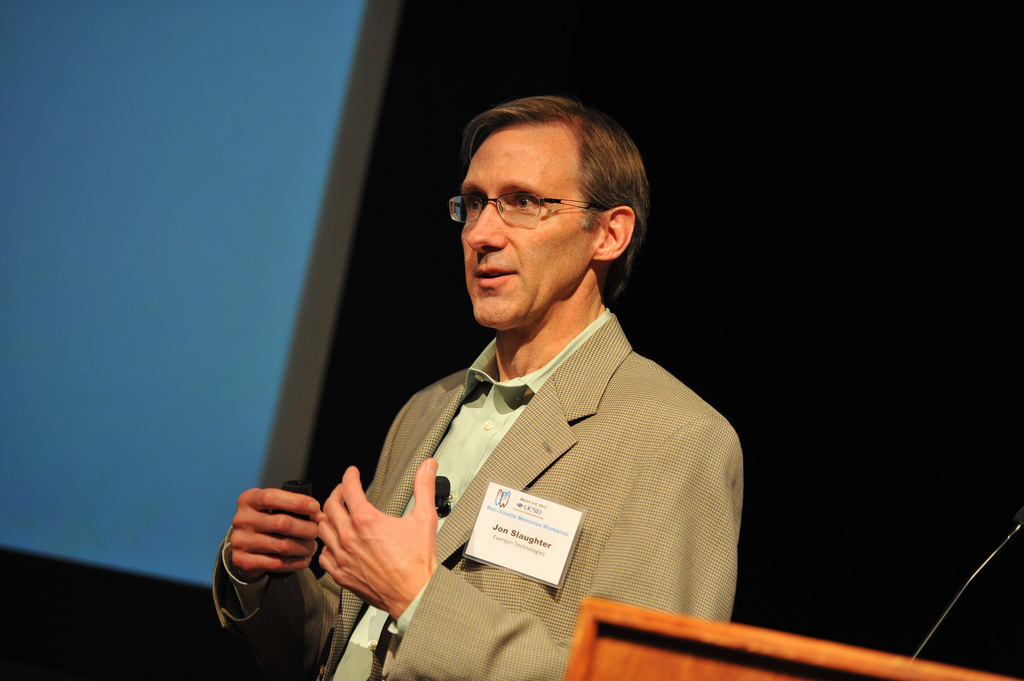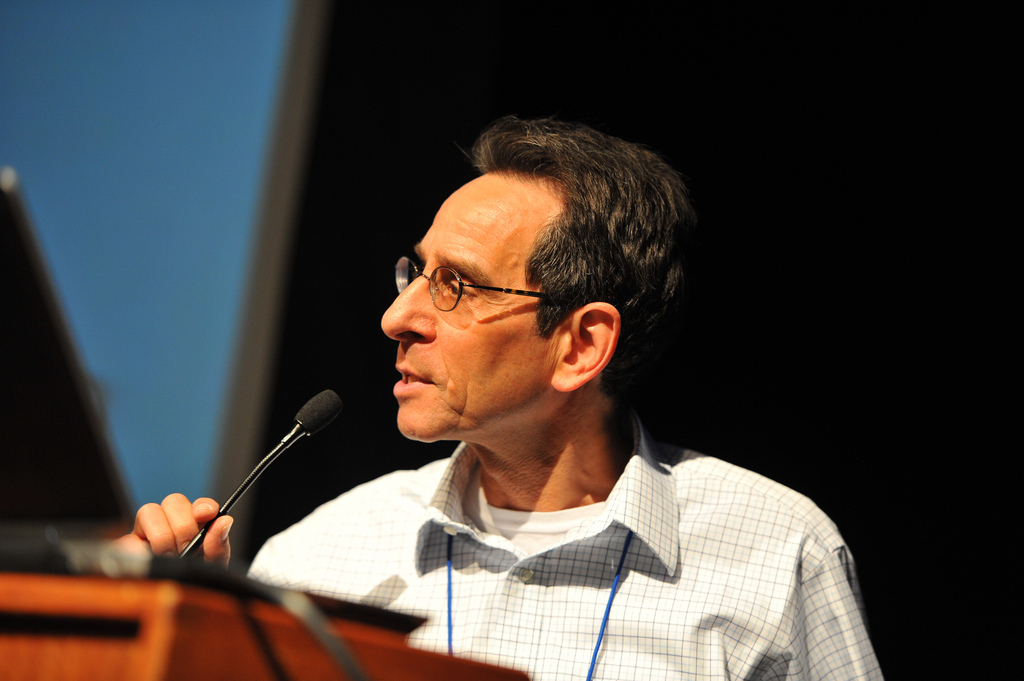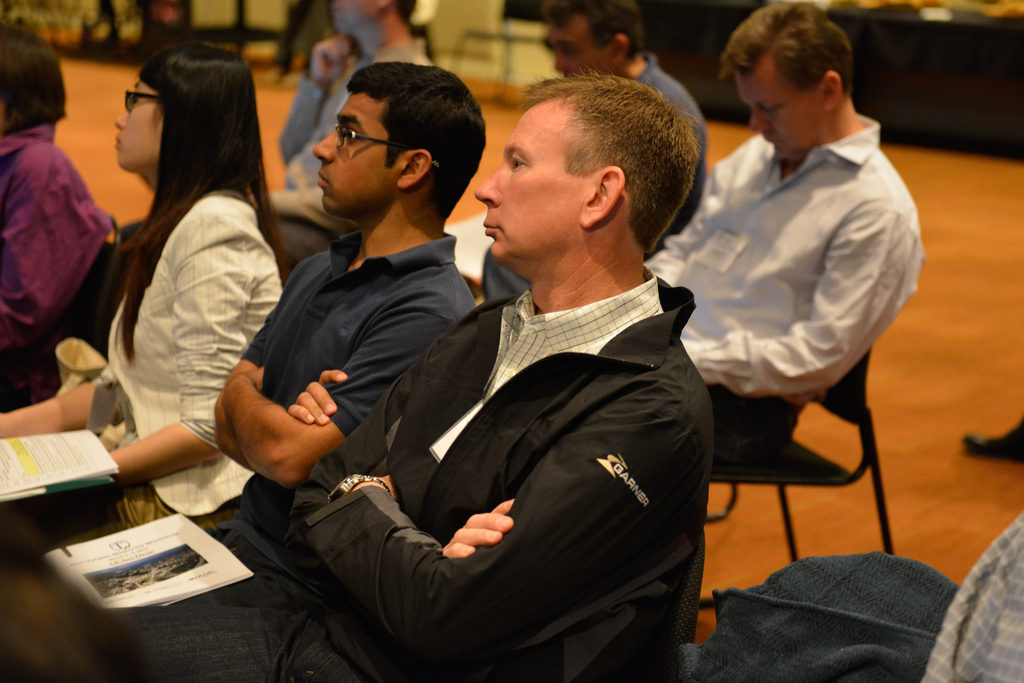News Release
Better, Cheaper, Faster Ways for Making (and Destroying) Memories
San Diego, Calif., March 21, 2013 -- For literary types, memory is often linked with Marcel Proust’s madeleine cookie, which, in a single bite, launches a nostalgic reverie that lasts through seven volumes.
|
But for scientists and engineers at the University of California, San Diego, ‘memory’ in the computing sense is all about a different kind of sweet: layer cake.
By following a so-called “layer-cake approach” to data storage and retrieval, all components of such systems evolve in tandem, so that advances in hardware don’t rapidly eclipse advances in software, or vice versa. Â鶹´«Ã½’s annual Non-Volatile Memories Workshop (NVMW), now in its fourth year, is an opportunity for the many academic researchers working in the field of non-volatile memories to partner with industry representatives “and bring all the layers together to nudge academics in the right direction,” said Steven Swanson, associate professor of computer science at the Jacobs School of Engineering at Â鶹´«Ã½.
Swanson is also co-director of the Non-Volatile Systems Laboratory and an affiliate of the Center for Magnetic Recording Research (CMRR), which hosts the workshop. CMRR is a partner of the Â鶹´«Ã½ division of the California Institute for Telecommunications and Information Technology (Calit2). Also representing Â鶹´«Ã½ at the conference were graduate student Adrian Caulfield (who presented a talk on "QuickSAN: A Storage Area Network for Fast, Distributed Solid State Disks"), post-doctorate Arup De ("Minerva: A Compute Capable SSD Architecture for Next-Generation Non-Volatile Memories") and Ph.D candidate Minghai Qin ("Inter-cell Interference Free Codes for Read/Write in Flash Memories").
Non-volatile memories are crucial components of modern computing systems — components that make it possible to store increasingly large amounts of information in smaller spaces, at faster data transfer speeds and at lower cost to the consumer. (For a detailed explanation of non-volatile memories, read on the 2012 NVMW).
“What struck me most about this year’s conference is that the vast majority of papers are from academics, but 65 percent of the more than 200 attendees are from industry,” said Swanson. “Together, we’re figuring out how to integrate application-specific storage and other components into a working, coherent system while still managing power costs. Eventually, this research will make it possible to run more interesting apps and programs on your smartphone, and make your battery last longer.”
|
One form of non-volatile memory making major inroads is magnetoresistive random access memory, or MRAM. The workshop’s keynote address, presented by Everspin Technologies Vice President of R&D Jon Slaughter, addressed his company’s progress in developing and commercializing MRAM.
MRAM, which has been in development since the 1990s, uses magnetic elements to store data in lieu of electric charge or current flows used by conventional RAM chip technologies. It’s faster than flash memory (an industry mainstay) and unlike flash, suffers no degradation over time. Some visionaries in the field predict MRAM will eventually become dominant for all types of computer memory, heralding its potential as a much anticipated “universal memory.”
“Right now there’s a huge worldwide race to get out the next generation of MRAM, which is spin-torque MRAM,” noted Slaughter. Spin-transfer torque is a technique for writing data to a “cell” that uses less electrical current than other write techniques. This consequently reduces latency, or the time delay experienced by a computing system.
Spin torque also improves MRAM density, or the number of cells that can be packed onto a single chip. The more cells one can cram onto a single silicon wafer, the greater the yield and the lower the cost. Although MRAM cells can suffer from “false writes,” or errors, when scaled down to the nanometer level, spin-torque transfer mitigates this tendency.
“Everspin is the only company that ships spin-torque MRAM, and we’re now sampling working parts to customers,” he added. “Spin-torque is a particular flavor that’s new, and everyone is very excited about it. This is a field where we’re quickly building on discoveries that come from researchers, and with all the huge interest in the industry, there are untold amounts of money being thrown at this technology.
“I don’t know which discoveries today are going to become products 10 years from now,” added Slaughter, “but I see a lot of great things happening.”
Ten years is something of a magic number for the data storage industry. Although 10 years might seem like an eternity for consumers, a decade is usually about how long it takes new forms of memory to make their way from the lab to the laptop.
|
“Usually the discovery is made by an academic working at a primitive level, meaning it might be the first time people are observing a certain phenomenon,” explained Paul Siegel, professor of Electrical and Computer Engineering at the Jacobs School and a former director of CMRR. “Taking those primitive discoveries and manufacturing them at the chip level is a long road from that first observation. My guess, however, is that as the pace of research speeds up, the pace of commercialization will also advance.”
“To predict how memories will evolve in 20 years,” added Swanson, “look at what you can do now for infinite money and then predict based on the cost going down.”
Predicting how technologies will evolve over two decades is especially important for Ron Stofan’s clients, many of whom are more interested in destroying data than in storing or retrieving it. Stofan is president of Garner Products, Inc., a manufacturer since 1959 of degaussers and other devices that either magnetically erase or physically destroy hard drives for commercial clients such as banks and health institutions, as well as the U.S. government. (He notes his company still has a warranty card issued from the basement of the White House during the Nixon administration.)
Stofan attended this year’s NVMW to see what new technologies are now emerging that might change the way data is stored and retrieved decades from now. He says keeping up with advances in memory requires constant vigilance.
“Right now, if someone overwrites data, there’s technology out there that can still retrieve that data. The government, at the level of the Department of Defense and National Security Administration, has rescinded overwrite erasure policy due to these problematic areas.”
Degaussing (demagnetizing a hard drive) has therefore become commonplace, but “after that I recommend physical destruction,” he said. “People like to see physical destruction. It’s like the visual satisfaction and feeling of security people get from shredding a piece of paper.”
|
And when Stofan says “physical destruction,” he means it. His company now manufactures a patent-pending accessory to the Garner PD-5 Physical Hard Drive Destroyer made of two beds of nails, which pierce through solid-state hard drives to break and crack all of the data chips. The PD-5 can also destroy two hard drives simultaneously in 18 seconds, ultimately mangling the data platters and making them unreadable.
By contrast, Stofan recently saw a photo of a hard drive that someone had shot with a 45-caliber pistol. He noted that the bullet merely lodged in the data platters, leaving the majority of the information undamaged and retrievable.
In the future, even physically destroying a hard drive might not be enough to keep nefarious types from accessing data. Stofan noted that his company works with CMRR Associate Research Scientist Fred Spada of Â鶹´«Ã½ to have his products evaluated in terms of emerging threats, and still people go to extremes to destroy their data.
“One lady brought her hard drives in to a tradeshow to be degaussed and physically destroyed. ” he recalled. “When we put the hard drives in the PD-4 Physical Hard Drive Destroyer , we noticed liquid coming out of the drives. It turns out she had submerged them in a sink of water and then frozen them thinking this would protect her data. Fortunately she recognized this was insufficient and came to us to properly eliminate her data."
“When people want data gone, they really want it gone."
Media Contacts
Tiffany Fox
Qualcomm Institute
858-246-0353
tfox@ucsd.edu



